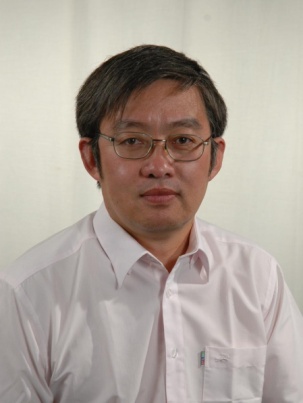自動化學(xué)院4月11日學(xué)術(shù)報告預(yù)告
發(fā)布日期:2013-04-10
題目:Cooperative Target Tracking of Multiple Robots
日期:2013年4月11日 上午10:00-11:30
地點(diǎn):六號教學(xué)樓3層會議室
Abstract: This talk will focus on the problem of moving target tracking with a group of mobile robots. Each robot in the group has a pan/tilt camera to detect the target and has limited communication capability to communicate with neighbor robots. The problem is solved by separating it into two parts. One part is the estimation of target position and another is the flocking control of multiple robots moving towards the estimated position. We will focus on the estimation part in this talk. A novel distributed Kalman filter is developed to estimate the target position. The distributed Kalman filter is deduced based on a standard Kalman filter by modeling the neighbor's information as one of measurements. In the motion control part, a brief distributed flocking algorithm is used to track the estimated target and avoid collision. Finally the tracking algorithms are simulated with 2D and 3D robots to verify their performance. A group of three real ground mobile robots is used to test the proposed algorithm. 谷東兵教授目前在英國Essex大學(xué)計算機(jī)科學(xué)與電子工程學(xué)院工作,博士生導(dǎo)師。分別于1985和1988年在北京理工大學(xué)自動化系獲得學(xué)士和碩士學(xué)位,于2004年在英國埃塞克斯大學(xué)計算機(jī)系獲博士學(xué)位。谷東兵教授的研究方向包括機(jī)器學(xué)習(xí)、機(jī)器人感知與控制、圖像處理等,在世界一流期刊如IEEE Transaction系列和國際會議上發(fā)表論文100多篇,學(xué)術(shù)成就顯著。他目前是國際期刊Int. J. of model, identification, and control的編輯,是10多個IEEE 國際會議的組委會成員和50多個國際會議的程序委員會成員,是20多個IEEE國際會議的分會主席,在國際學(xué)術(shù)界有著廣泛的聯(lián)系和較高的知名度。
谷東兵教授目前在英國Essex大學(xué)計算機(jī)科學(xué)與電子工程學(xué)院工作,博士生導(dǎo)師。分別于1985和1988年在北京理工大學(xué)自動化系獲得學(xué)士和碩士學(xué)位,于2004年在英國埃塞克斯大學(xué)計算機(jī)系獲博士學(xué)位。谷東兵教授的研究方向包括機(jī)器學(xué)習(xí)、機(jī)器人感知與控制、圖像處理等,在世界一流期刊如IEEE Transaction系列和國際會議上發(fā)表論文100多篇,學(xué)術(shù)成就顯著。他目前是國際期刊Int. J. of model, identification, and control的編輯,是10多個IEEE 國際會議的組委會成員和50多個國際會議的程序委員會成員,是20多個IEEE國際會議的分會主席,在國際學(xué)術(shù)界有著廣泛的聯(lián)系和較高的知名度。
邀請單位:北京理工大學(xué)自動化學(xué)院
“復(fù)雜系統(tǒng)智能控制與決策”國家重點(diǎn)實(shí)驗(yàn)室(培育基地)
日期:2013年4月11日 上午10:00-11:30
地點(diǎn):六號教學(xué)樓3層會議室
Abstract: This talk will focus on the problem of moving target tracking with a group of mobile robots. Each robot in the group has a pan/tilt camera to detect the target and has limited communication capability to communicate with neighbor robots. The problem is solved by separating it into two parts. One part is the estimation of target position and another is the flocking control of multiple robots moving towards the estimated position. We will focus on the estimation part in this talk. A novel distributed Kalman filter is developed to estimate the target position. The distributed Kalman filter is deduced based on a standard Kalman filter by modeling the neighbor's information as one of measurements. In the motion control part, a brief distributed flocking algorithm is used to track the estimated target and avoid collision. Finally the tracking algorithms are simulated with 2D and 3D robots to verify their performance. A group of three real ground mobile robots is used to test the proposed algorithm.
主講人簡介:

邀請單位:北京理工大學(xué)自動化學(xué)院
“復(fù)雜系統(tǒng)智能控制與決策”國家重點(diǎn)實(shí)驗(yàn)室(培育基地)
